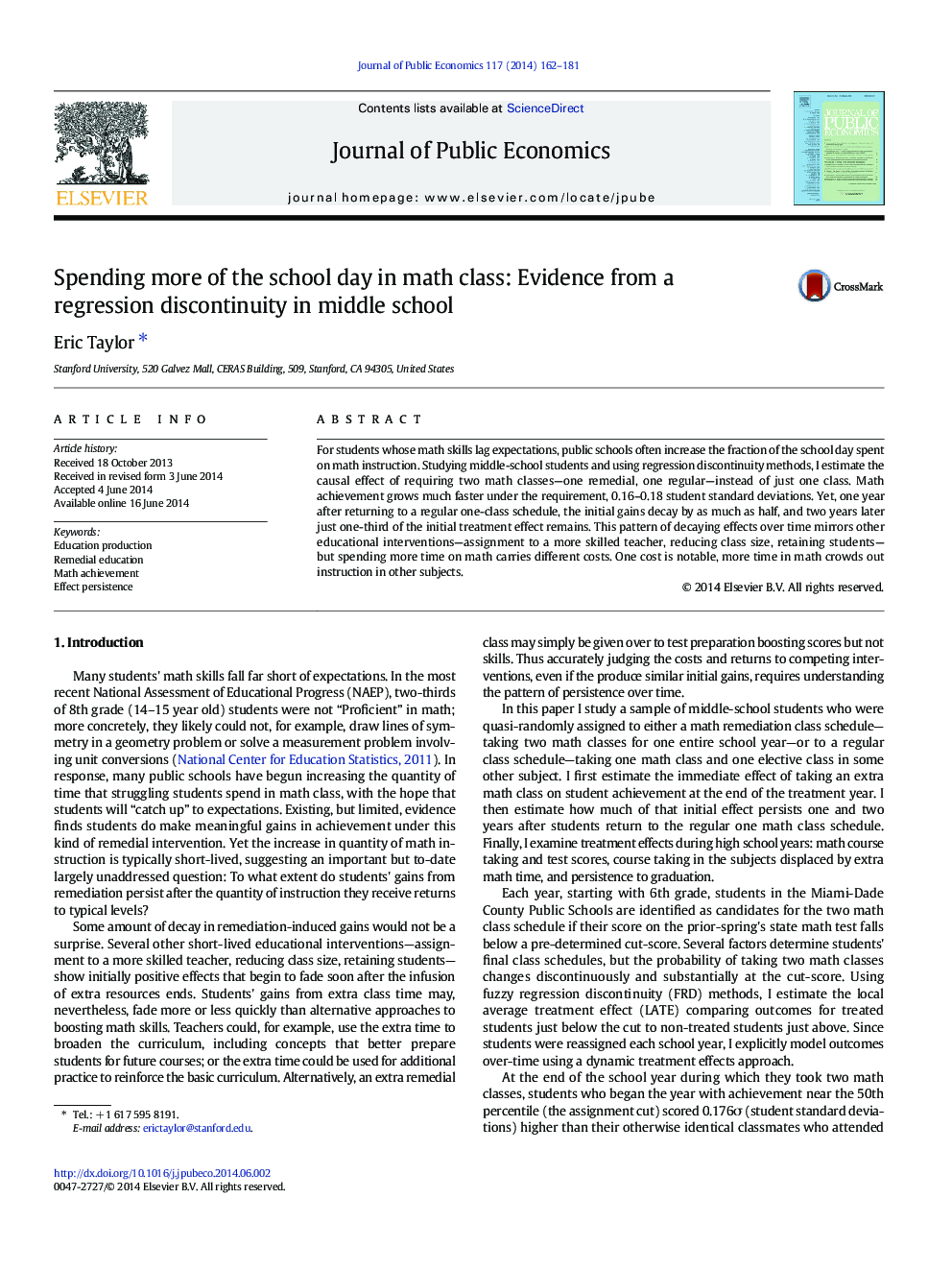| Article ID | Journal | Published Year | Pages | File Type |
|---|---|---|---|---|
| 7370290 | Journal of Public Economics | 2014 | 20 Pages |
Abstract
For students whose math skills lag expectations, public schools often increase the fraction of the school day spent on math instruction. Studying middle-school students and using regression discontinuity methods, I estimate the causal effect of requiring two math classes-one remedial, one regular-instead of just one class. Math achievement grows much faster under the requirement, 0.16-0.18 student standard deviations. Yet, one year after returning to a regular one-class schedule, the initial gains decay by as much as half, and two years later just one-third of the initial treatment effect remains. This pattern of decaying effects over time mirrors other educational interventions-assignment to a more skilled teacher, reducing class size, retaining students-but spending more time on math carries different costs. One cost is notable, more time in math crowds out instruction in other subjects.
Related Topics
Social Sciences and Humanities
Economics, Econometrics and Finance
Economics and Econometrics
Authors
Eric Taylor,
